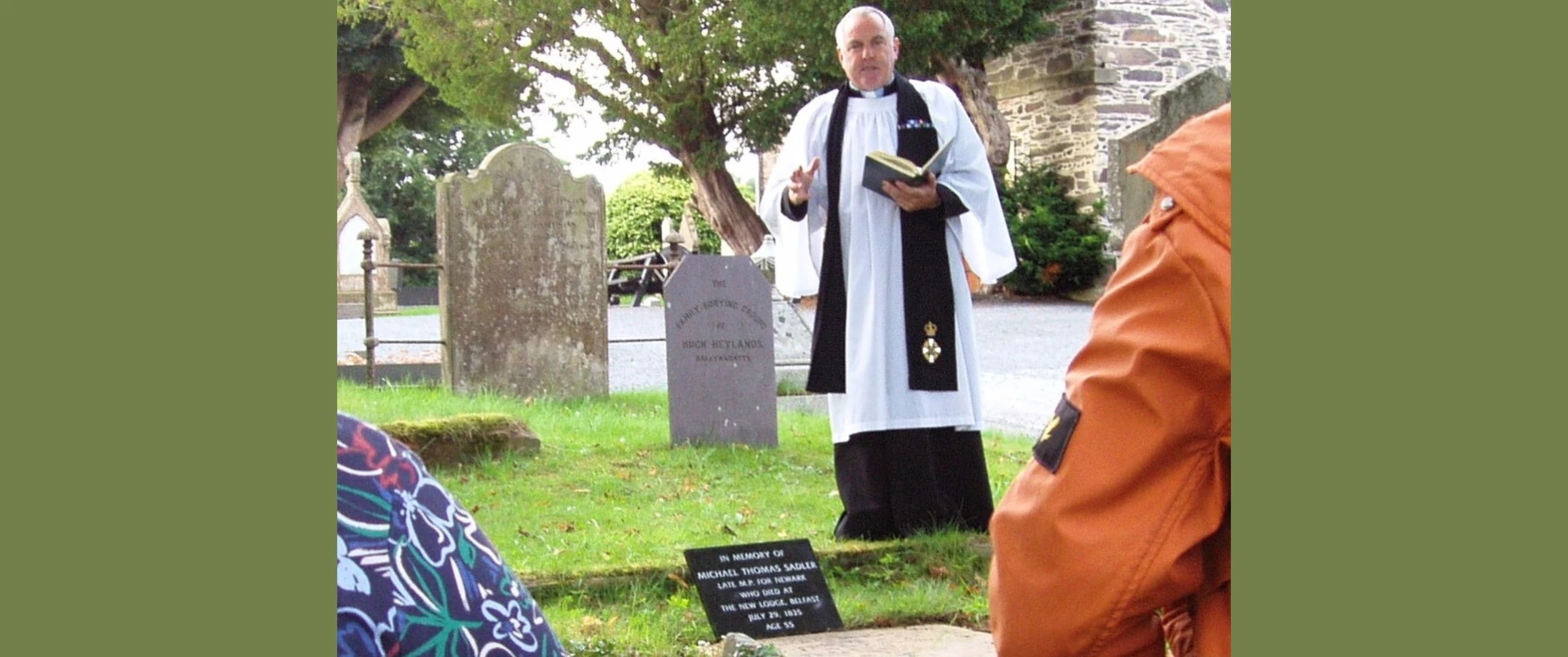Reforming MP remembered at Holy Trinity Ballylesson
Michael Thomas Sadler, who was often referred to as the forgotten member of Parliament, was remembered at a service beside his grave at Holy Trinity Parish Church, Ballylesson on 29 July 2025. It marked the 190th anniversary of his death.
Sadler was instrumental in the introduction of the Factory Act of 1833 which gave fundamental protections to children in the workforce. He was born on 3 January 1780 at Snelston, Derbyshire and died at the New Lodge in Belfast on 29 July 1835.
During the service, which was conducted by the rector Revd Mervyn Jamison, a plaque was unveiled by two 7-year-old children.
Those present heard that 190 years ago, the Revd Thomas Drew, rector of Christ Church, College Square in Belfast conducted the funeral service at 8.00am on Tuesday 11 August 1835. Sadler, for health reasons, moved with his family from Leeds in July 1834 to the New Lodge in Belfast. During his time living in Belfast, he attended Christ Church, and it was the Revd Drew who was with him during his final hours.
For many years Sadler’s grave at Ballylesson remained ‘hidden’ behind rusted cast iron fencing and had become overgrown and covered with weeds. There was no way of knowing that it was Sadler’s grave. Recently the church had the fencing cut away and the overgrown vegetation removed from the flat gravestone, but the writing on the headstone was still barely visible.
The church’s work on the grave has made it possible for the memorial plaque to be placed there and is just a first step in making a greater number of people aware of the life of Sadler and the location of his grave.
Michael Thomas Sadler was born into an Anglican family with evangelical sympathies. They were greatly influenced by the early Methodists and attended their meetings at Doveridge. His evangelical faith was the main driving force throughout his life. Sadler became an MP for Newark in 1829 and Aldborough in 1831. He introduced on 16 March 1832, a bill for regulating the labour of children and young people in the mills and factories. The bill became known as the Ten Hour Bill, proposing the limit of 10 hours of labour he wanted to see for children aged 9 to 18 years. It was passed, but not until after his death. Sadler’s health was fatally impaired due to his strenuous work of chairing what was known as the Sadler Committee.
After Sadler’s death the campaign for factory reform continued with the support of Ashley Cooper, Lord Ashley (afterward 7th Earl of Shaftesbury), who succeeded Sadler as parliamentary leader of the Labour Reform Movement. The work of Michael Thomas Sadler, Lord Shaftesbury and others led to the Factory Act of 1833 being passed by Parliament stating that: Children under the age of nine are forbidden to work in factories. Those aged between nine and 13 are limited to working nine hours a day and 48 hours a week. Under 13s have to attend school for two hours a day. Those aged between 13 and 18 are limited to working 69 hours a week. Inspectors are to be appointed to ensure factory owners do not break these laws.
With thanks to Mr Willian Dickson
